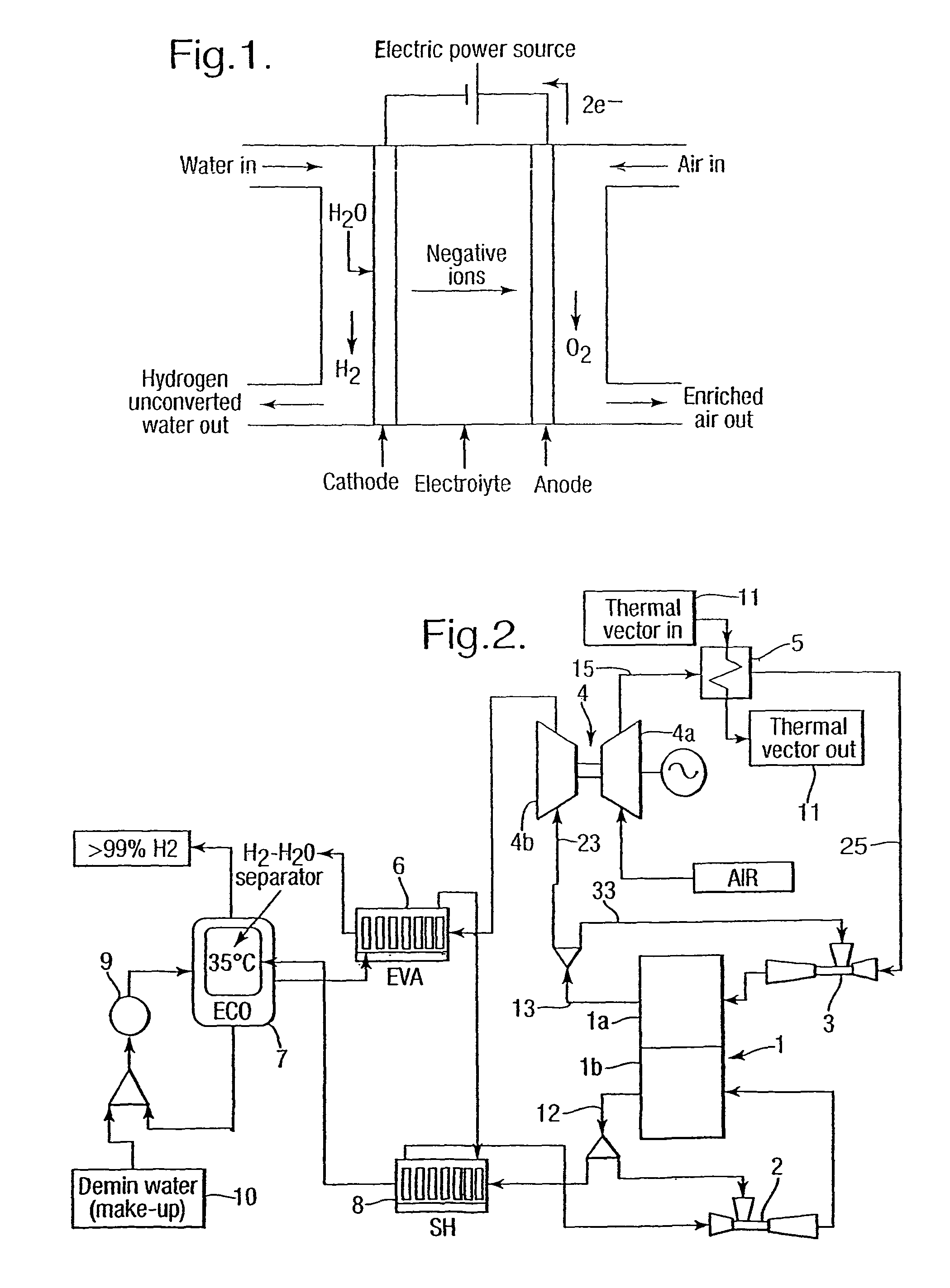Electrolysis apparatus
a technology of electrolysis apparatus and electrodes, applied in the field of electrolysis, can solve the problems of reducing the effectiveness and practicability of such approaches, low efficiency of operation of these electrolysers, and low efficiency, and achieve the effect of reducing capability
- Summary
- Abstract
- Description
- Claims
- Application Information
AI Technical Summary
Problems solved by technology
Method used
Image
Examples
first embodiment
[0026]FIG. 2 provides a schematic illustration of a water electrolysis apparatus in accordance with certain aspects of the present invention. This embodiment and other embodiments are given as examples and the approach described may be utilised in respect of electrolysis apparatus to produce products other than hydrogen. Thus, a stack 1 comprises an anode portion and a cathode portion to which compressed air is provided from the ejector 3 and steam from an ejector 2 are respectively presented. Operation of the water electrolysis apparatus will be described below, but it will be appreciated that by reversal the present invention utilises a typical solid oxide fuel cell construction with minimal modifications.
[0027]The stack 1 as indicated compromises a solid oxide electrolyte with an anode side and a cathode side. In such circumstances compressed air from the ejector 3 is directed towards the anode 1a in the water electrolysis embodiment in accordance with one aspect of the present i...
second embodiment
[0044]The amount of compressed air flow per stack 1 is limited by the maximum, producible steam flow rate from the internal heat recuperation process within the water electrolysis cycle, that is to say recovery at the gas turbine outlet. An alternative or second embodiment of a water electrolysis apparatus is depicted in FIG. 3 in which additional steam generation capacity is provided by exploiting heat taken from a heat exchanger 55 utilised in order to provide heat for steam generation. It will be understood that the temperature at the outlet from the heat exchanger 55 will generally be in the range of at least 350-400° C. to allow sufficient approach to delta T to the input temperature of the air coming from the compressor.
[0045]In FIG. 3 like for like components are similarly numbered to those referenced in FIG. 2 and additional description provided by additional features of this second embodiment. In such circumstances by use of the output heat from the heat exchanger 55 it wil...
PUM
| Property | Measurement | Unit |
|---|---|---|
| temperature | aaaaa | aaaaa |
| temperatures | aaaaa | aaaaa |
| temperature | aaaaa | aaaaa |
Abstract
Description
Claims
Application Information
 Login to View More
Login to View More - R&D
- Intellectual Property
- Life Sciences
- Materials
- Tech Scout
- Unparalleled Data Quality
- Higher Quality Content
- 60% Fewer Hallucinations
Browse by: Latest US Patents, China's latest patents, Technical Efficacy Thesaurus, Application Domain, Technology Topic, Popular Technical Reports.
© 2025 PatSnap. All rights reserved.Legal|Privacy policy|Modern Slavery Act Transparency Statement|Sitemap|About US| Contact US: help@patsnap.com



